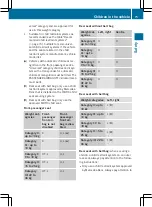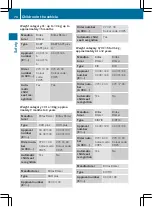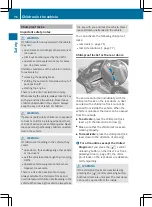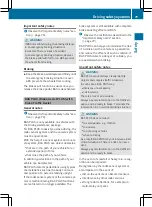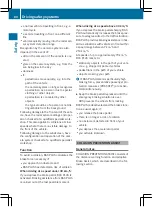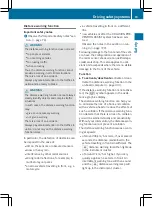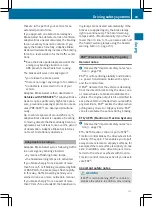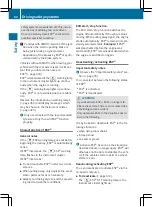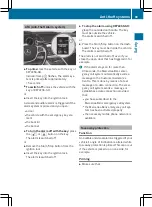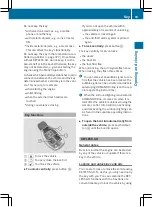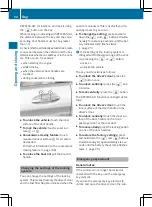
X
Brake immediately in order to increase the
distance from the vehicle in front.
or
X
Take evasive action provided it is safe to do
so.
Due to the nature of the system, particularly
complicated but non-critical driving condi-
tions may also cause the system to display a
warning.
With the help of the radar sensor system, the
distance warning function can detect obsta-
cles that are in the path of your vehicle for an
extended period of time.
Up to a speed of about 70 km/h, the distance
warning function can also react to stationary
obstacles, such as stopped or parked vehi-
cles.
If you approach an obstacle and the distance
warning function detects a risk of a collision,
the system will alert you both visually and
acoustically.
Adaptive Brake Assist
i
Observe the "Important safety notes" sec-
tion (
Y
page 78).
G
WARNING
Adaptive Brake Assist cannot always clearly
identify objects and complex traffic situa-
tions.
In such cases, Adaptive Brake Assist may:
R
intervene unnecessarily
R
not intervene
There is a risk of an accident.
Always pay careful attention to the traffic sit-
uation and be ready to brake. Terminate the
intervention in a non-critical driving situation.
G
WARNING
Adaptive Brake Assist does not react:
R
to people or animals
R
to oncoming vehicles
R
to crossing traffic
R
to stationary obstacles
R
when cornering
As a result, Adaptive Brake Assist may not
intervene in all critical conditions. There is a
risk of an accident.
Always pay careful attention to the traffic sit-
uation and be ready to brake.
Due to the nature of the system, particularly
complicated but non-critical driving condi-
tions may also cause Brake Assist to inter-
vene.
If adaptive Brake Assist is not available due
to a malfunction in the radar sensor system,
the brake system remains available with full
brake boosting effect and BAS.
In particular, the detection of obstacles can
be impaired in the case of:
R
dirt on the sensors or obscured sensors
R
snow or heavy rain
R
interference by other radar sources
R
strong radar reflections, for example, in
multi-storey car parks
R
a narrow vehicle travelling in front, e.g. a
motorcycle
R
a vehicle travelling in front on a different
line
R
new vehicles after the first few kilometres
of driving or after the COLLISION PREVEN-
TION ASSIST system has been serviced
Observe the notes in the section on run-
ning-in (
Y
page 190).
Following damage to the front end of the vehi-
cle, have the configuration and operation of
the radar sensor checked at a qualified spe-
cialist workshop. This also applies to colli-
sions at slow speeds where there is no visible
damage to the front of the vehicle.
Adaptive Brake Assist aids you in braking dur-
ing hazardous situations at speeds above
7 km/h and uses the radar sensor system to
evaluate the traffic situation.
With the help of adaptive Brake Assist, the
distance warning signal can detect obstacles
82
Driving safety systems
Safe
ty
Содержание 2013 S-CLASS
Страница 2: ......
Страница 3: ......
Страница 5: ......
Страница 33: ...30 ...
Страница 119: ...116 ...
Страница 163: ...160 ...
Страница 191: ...188 ...
Страница 372: ...Useful information 370 Stowage areas 370 Features 378 369 Stowing and features ...
Страница 402: ...Useful information 400 Engine compartment 400 ASSYST PLUS 405 Care 406 399 Maintenance and care ...
Страница 441: ...438 ...
Страница 489: ...486 ...
Страница 490: ...487 ...
Страница 491: ...488 ...
Страница 492: ......
Страница 493: ......




